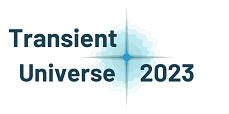Speaker
Description
The Transiting Exoplanet Survey Satellite (TESS) has been conducting a wide-field, space-based survey of the entire night sky to identify transiting exoplanets. Additionally, its large field of view (2304 sq. deg) and continuous, high-cadence, monthlong observations of a given region of the sky lend it well to the discovery and characterization of transients. TESS can work in conjunction with other observatories, both throughout the electromagnetic spectrum and in gravitational waves (GWs), enabling its use as a tool to advance multi-messenger astronomy. In this talk, I will discuss some of the population-level studies that TESS has enabled for transients such as Type Ia supernovae. I will also discuss our progress on building a transient identification pipeline to extract transient candidates from TESS full-frame images for follow-up study. Finally, I will touch on our recent results showing that TESS may be well-positioned to observe a kilonova counterpart to a compact object merger as part of the LIGO-Virgo-KAGRA GW network’s next observing run, slated to start in May 2023.

